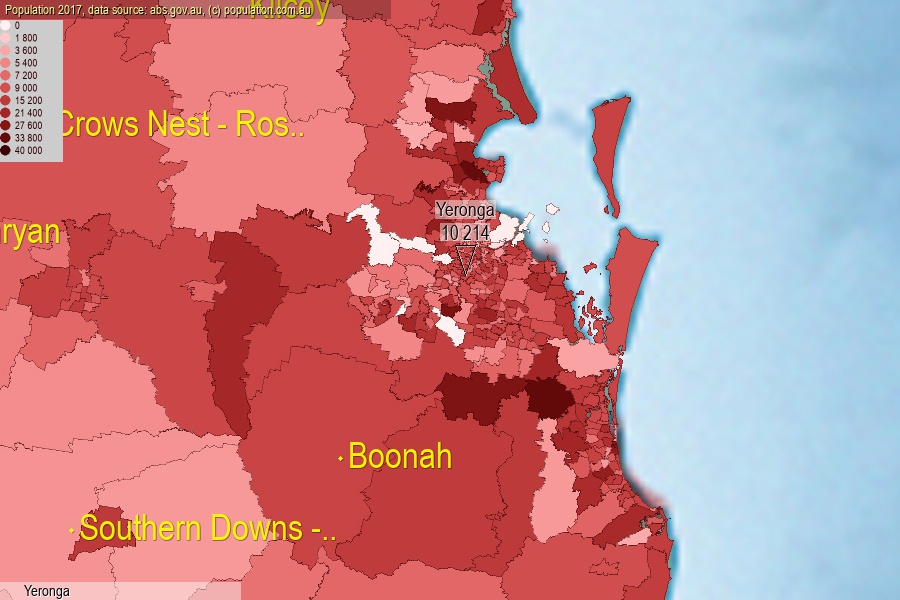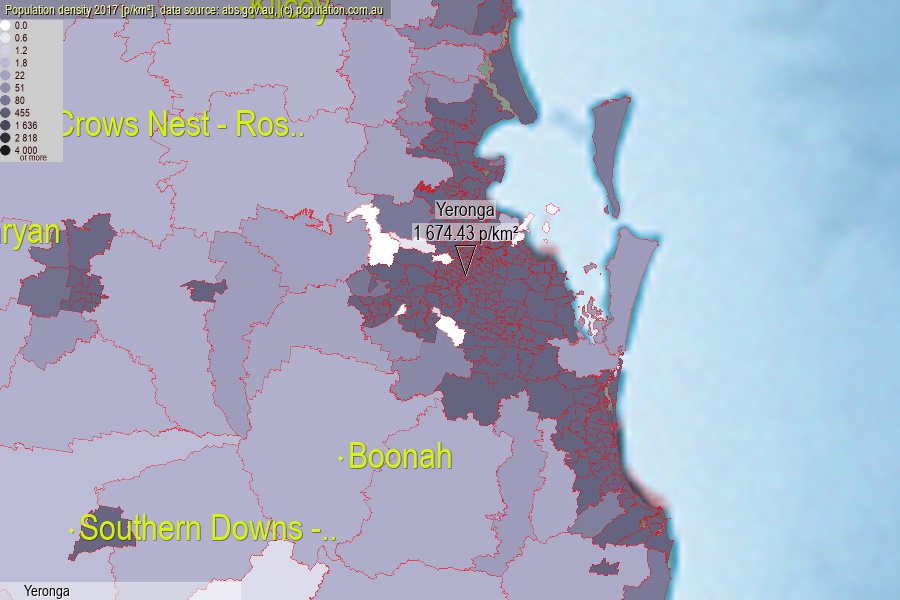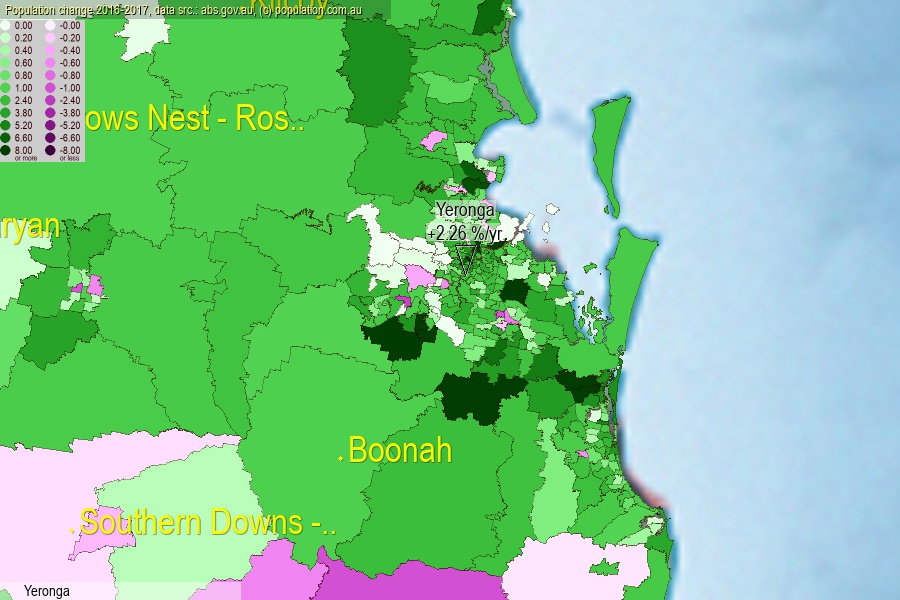 population.com.au
population.com.auLast official estimated population of Yeronga (as Statistical Area Level 2) was 10 214 people (on 2017-06-30)[2]. This was 0.04% of total Australian population and 0.205% of QLD population. Area of Yeronga is 6.10 km², in this year population density was 1 674.43 p/km² . If population growth rate would be same as in period 2016-2017 (+2.26%/yr), Yeronga population in 2025 would be 12 216. [0]



Click to enlarge. Yeronga is located in the center of the images.
Population [people], population density [p./km²] and population change [%/year] [2]
View borders » (new window) [4]
[1991-1992] +0.09 %/Yr.
[1992-1993] -0.17 %/Yr.
[1993-1994] +1.02 %/Yr.
[1994-1995] +0.52 %/Yr.
[1995-1996] +0.80 %/Yr.
[1996-1997] +0.24 %/Yr.
[1997-1998] +0.34 %/Yr.
[1998-1999] +1.14 %/Yr.
[1999-2000] +3.43 %/Yr.
[2000-2001] +1.55 %/Yr.
[2001-2002] +2.13 %/Yr.
[2002-2003] +1.59 %/Yr.
[2003-2004] +1.41 %/Yr.
[2004-2005] +1.09 %/Yr.
[2005-2006] +1.72 %/Yr.
[2006-2007] +2.35 %/Yr.
[2007-2008] +2.23 %/Yr.
[2008-2009] +4.42 %/Yr.
[2009-2010] +1.84 %/Yr.
[2010-2011] +1.22 %/Yr.
[2011-2012] +2.96 %/Yr.
[2012-2013] +2.34 %/Yr.
[2013-2014] +1.15 %/Yr.
[2014-2015] +2.73 %/Yr.
[2015-2016] +3.11 %/Yr.
[2016-2017] +2.26 %/Yr.
[0] Calculated with linear interpolation from officially estimated population
[1] Read more about SA2 and Australian Statistical Geography Standard (ASGS) on abs.gov.au
[2] Population data from Australian Bureau of Statistics (Population and density: 2017; change: 2016-2017)
[3] Digital Boundaries: Australian Statistical Geography Standard (ASGS) 2016.
[4] Border coordinates are simplifyed using Ramer-Douglas-Peucker algorithm.